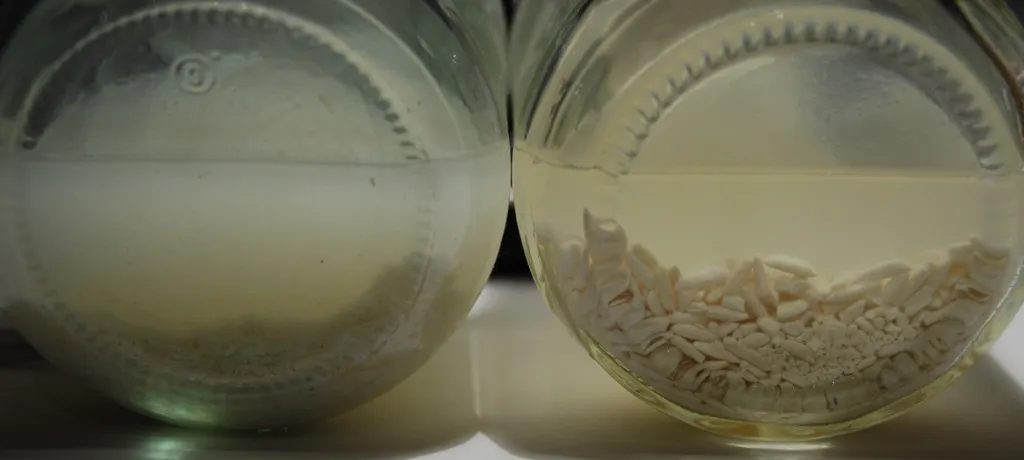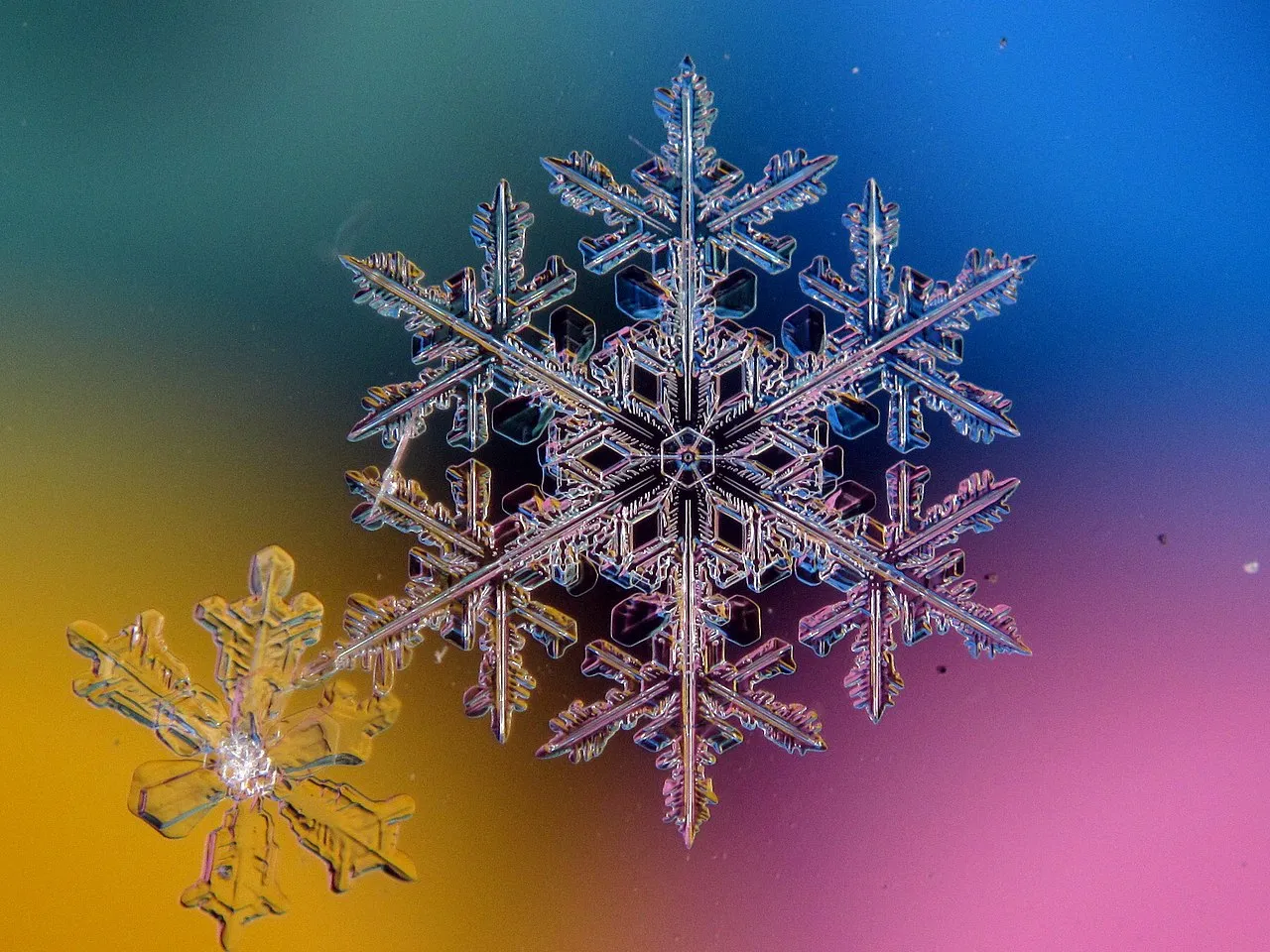
Ice crystals structures from Masaru Emoto's expirement. stackexchage, CC
Words change molecules of water. I came across this bold claim in the inspirational book I was reading. Masaru Emoto claims that the molecular structure of water changes when exposed to our words. If Emoto was right, he found a phenomenon that has real implications. The human body has about 75% water. The findings, if true, can change our perspective about the human body.
Emoto's experiments involve exposing water to words, pictures, or music. Afterward, he freezes it to observe under the microscope. Emoto claims that beautiful crystals come out from beautiful words while negative words have ugly crystals. There are many factors in forming water crystals, such as the rate of cooling and air pressure.
I was skeptical about his findings. I searched for feedback from the scientific community, and I found out he received criticisms. He did not disclose details about his experiment, and some argue if he has sufficient experimental control conditions. A blind study claims they failed to show the phenomena. He published his finding in the Journal of Scientific Exploration, which caters to fringe science.
There is no doubt about Emoto's sincerity, but his work has all fingers pointing to pseudoscience. Emoto failed to give concrete and measurable proof of his experiments. His research raises more questions than answers. After reading about Emoto's work, I asked myself, "Can words change or affect water?". Does science have a say about water memory and consciousness?
Water and Rice Experiment

Home expirement of Masaru Emoto's claim. wikimedia
Masaru Emoto gains international attention with the unconventional experiment. The experiment yields him to conclude that human thoughts affect matter. He photographed ice and observe the different crystal structures. Each of the ice is from the water bottles that he labeled with caring and curse words or phrases. The ice with caring words forms geometric and aesthetic crystals, while those with curse words are chaotic and disoriented. His findings are groundbreaking but have too much grayscale.
Emoto did another experiment with rice. There are three jars with rice that has different labels. He wrote: "I love you" on the first, "You're an idiot." and ignore the last. He left the jars close for a month. After a month, the first jar became sour while the other jars developed molds. He concluded that his thoughts affect its fermentation.
The experiment makes rounds on the internet. Many believe it, but you know, anything can cause it, such as fungi or bacteria. I tried to look more into it, but I think the scientific community would not bother. The fermentation may be due to yeast in the rice or temperature changes rather than words or thoughts. For the molds, fungi may cause it. There are many factors to consider for the rice to ferment and get molds.
Janae Devika and Glenda Christiaens debunk the claims of Emoto as its experiment results in no measured difference from the three jars. Like the rice experiment, Emoto's water experiment suffer the same fate. The scientific community quickly debunked his claims due to a lack of experimental control and replicability.
Water Memory

Ice Crystals structure. wikimedia
Emoto's experiment leads us to speculate that our thoughts can affect objects. His findings are extraordinary, but he failed to show measurable proof in a controlled environment. He claims that water has a memory. In 2015, a team of scientists from the Max Planck Institute proved water indeed has a memory. They claimed that water is not a continuum; hence it has local memory-enabling structures.
The idea of water memory started at Jacques Benveniste in the late 1980s. Benveniste claims that water molecules are biologically active. We can still find the original DNA of a substance even after diluted. Nobel laureate Dr. Montagnier, who discovered HIV, published a paper on DNA waves and water. He received many criticisms on his work on water consciousness.
Professor Bernard Kroplin found a way to make structures of water visible. He applied drops of water in a glass slide and observed it under a dark field microscope. He observed that some students produced consistent images. He showed a flower and a salad image that remained in the water after immersed in it. Mainstream science considers his work a pseudoscience.
In 2008, Emoto conducted a water blessing ceremony in Lake Baikal, the world's deepest and oldest freshwater lake, to observe changes. He used the GVD sensors method of Professor Konstatin Korovov, a Russian scientist, to measure changes in Lake Baikal during the ceremony. The experiment results indicate a distinct difference in the stages of the ceremony.
Conclusion
Mainstream science ridicules the experiments and finding for water memory and consciousness. They always equate it as pseudoscience. At some point in my reading, I personally skeptical of these claims. All clues are pointing to pseudoscience. As I dig deeper into the subject, I realized that there are facts and proofs for these claims.
The water has a memory as supported by the paper of Kotlin and a researcher from the Max Planck Institute. Water retains some DNA of the substance even after diluted. Kotlin showed an image of a flower in the water structure after immersed in it. Emoto's finding is borderline pseudoscience. His experiments lacked relevant control conditions.
If water has memory, does other matter has it? If it does have a memory, can we affect it through our thoughts or words? These are open questions I want to have answers in the future. These questions can change our understanding of matter and consciousness.
References
- The pseudoscience of creating beautiful (or ugly) water
- The Effects of Spoken and Written Words on the Fermentation and Decomposition Process of Rice
- Debunking the rice expirement
- The Curious Study of Water Consciousness
- Double-Blind Test of the Effects of Distant Intention on Water Crystal Formation
- Effects of Distant Intention on Water Crystal Formation: A Triple-Blind Replication
- The structural memory of water persists on a picosecond timescale
- Icy claim that water has memory
- The history of the Memory of Water
- The Controversy Over the “Memory of Water”
- DNA waves and water
- The memory of water
- Properties of Water – Does Water Have Memory or Consciousness?
- The memory of water is a reality
- Water Memory, What a Memory
- Study Shows Water Has Memory. German Scientists Expand On Dr. Emoto’s Work
